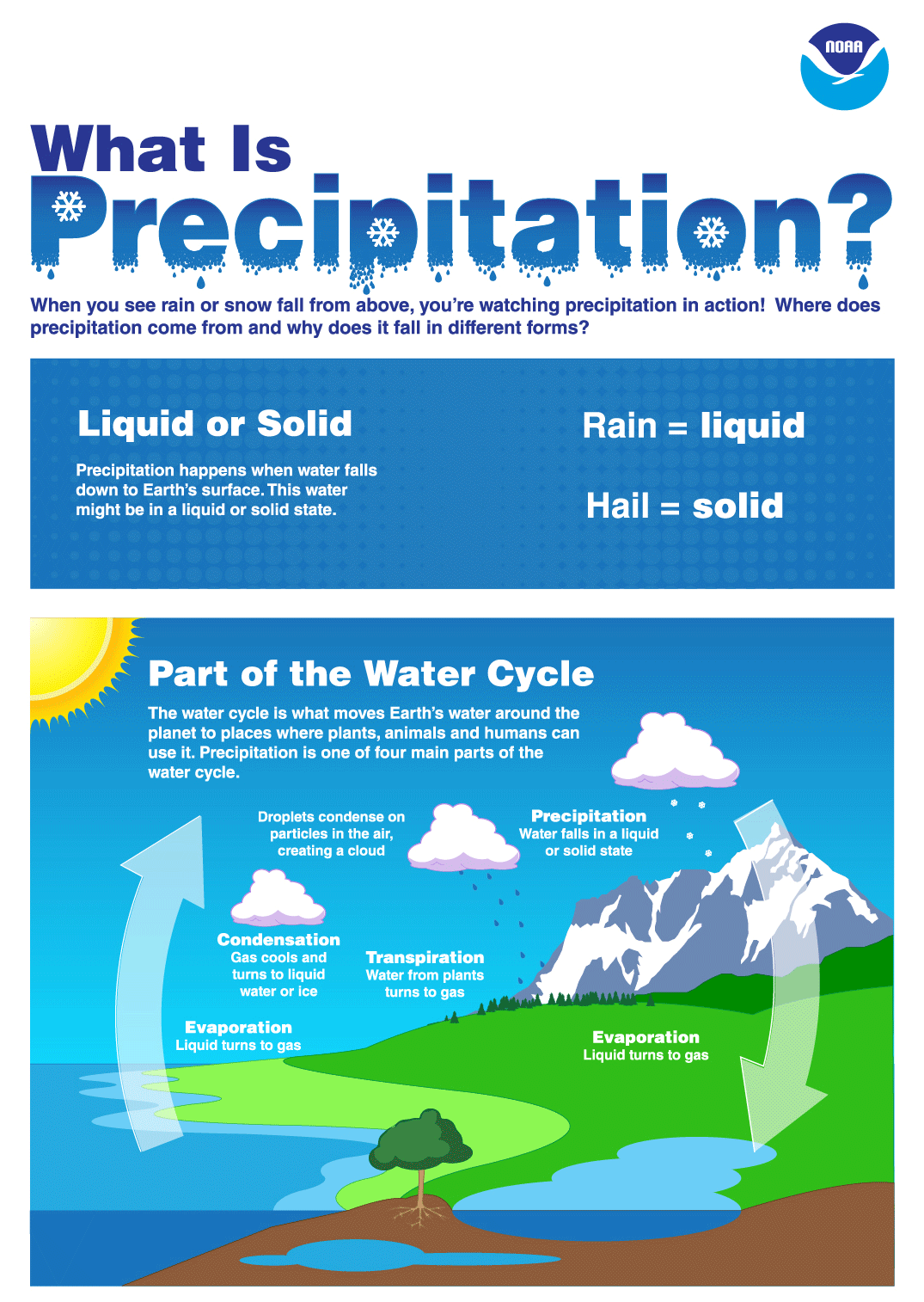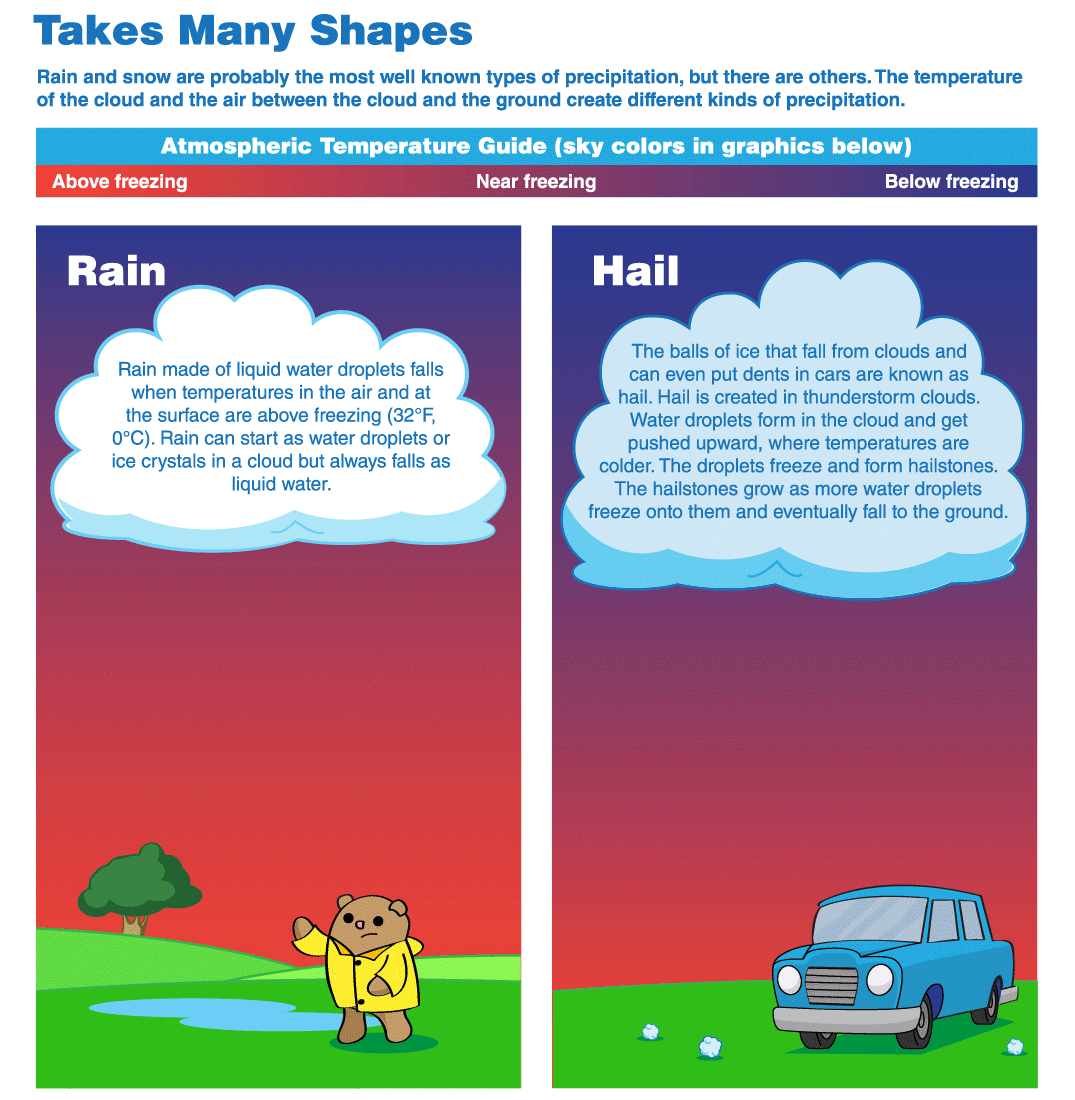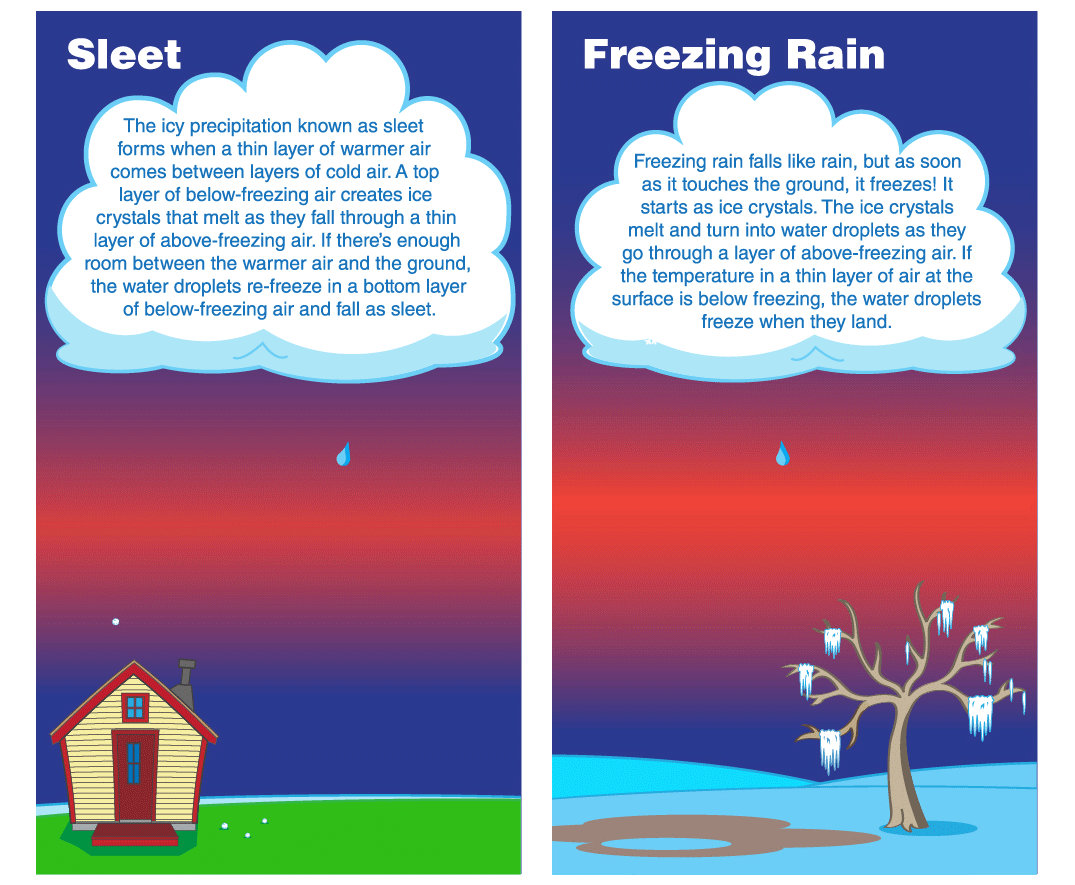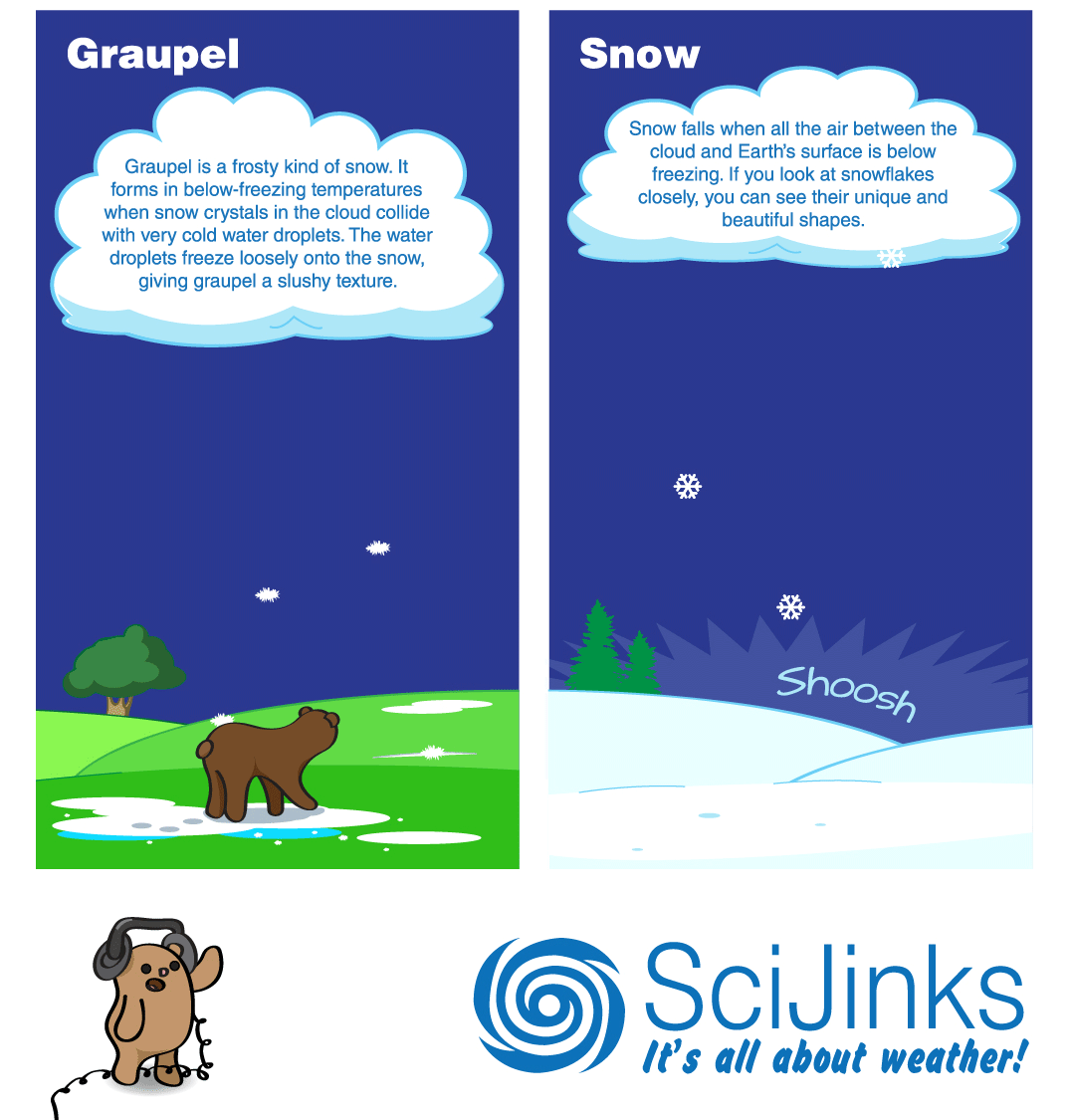



Download static version!
Download poster!
What is Precipitation?
When you see rain or snow fall from above, you’re watching precipitation in action! Where does precipitation come from and why does it fall in different forms?
Liquid or Solid
Precipitation happens when water falls down to Earth’s surface. This water might be in a liquid or solid state.
Rain = liquid
Hail = solid
Part of the Water Cycle
The water cycle is what moves Earth’s water around the planet to places where plants, animals and humans can use it. Precipitation is one of four main parts of the water cycle.
Evaporation: Liquid turns to gas.
Transpiration: Water from plants turns to gas.
Condensation: Gas cools and turns to liquid water or ice.
Droplets condense on particles in the air, creating a cloud.
Precipitation: Water falls in a liquid or solid state.
Takes Many Shapes
Rain and snow are probably the most well known types of precipitation, but there are others. The temperature of the cloud and the air between the cloud and the ground create different kinds of precipitation.
Rain: Rain made of liquid water droplets falls when temperatures in the air and at the surface are above freezing (32°F, 0°C). Rain can start as water droplets or ice crystals in a cloud but always falls as liquid water.
Hail: The balls of ice that fall from clouds and can even put dents in cars are known as hail. Hail is created in thunderstorm clouds. Water droplets form in the cloud and get pushed upward, where temperatures are colder. The droplets freeze and form hailstones. The hailstones grow as more water droplets freeze onto them and eventually fall to the ground.
Sleet: The icy precipitation known as sleet forms when a thin layer of warmer air comes between layers of cold air. A top layer of below-freezing air creates ice crystals that melt as they fall through a thin layer of above-freezing air. If there's enough room between the warmer air and the ground, the water droplets re-freeze in a bottom layer of below-freezing air and fall as sleet.
Freezing Rain: Freezing rain falls like rain, but as soon as it touches the ground, it freezes! It starts as ice crystals. The ice crystals melt and turn into water droplets as they go through a layer of above-freezing air. If the temperature in a thin layer of air at the surface is below freezing, the water droplets freeze when they land.
Graupel: Graupel is a frosty kind of snow. It forms in below-freezing temperatures when snow crystals in the cloud collide with very cold water droplets. The water droplets freeze loosely onto the snow, giving graupel a slushy texture.
Snow: Snow falls when all the air between the cloud and Earth's surface is below freezing. If you look at snowflakes closely, you can see their unique and beautiful shapes.




